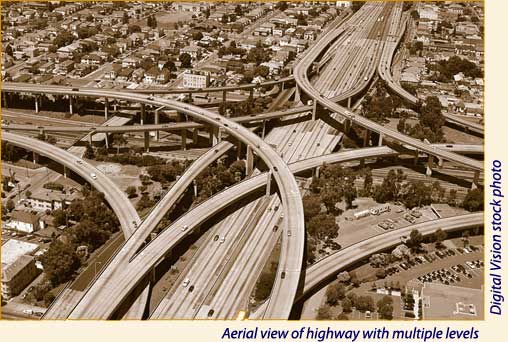 Chapter 1. Overview
Chapter 1. Overview
This Handbook describes the desired characteristics of a Full-Function Service Patrol (FFSP) program from the viewpoint of an agency funding, managing, and operating the program. It provides an operational concept for FFSPs, describes key characteristics and presents concepts, information, and guidance for deploying an FFSP. The Handbook’s intended audience includes State department of transportation decision-makers, managers, operators, and practitioners who are responsible for an FFSP; are considering implementing an FFSP program; or are contemplating upgrading an existing service patrol to full-function capabilities.
This Handbook contains the following chapters:
- Chapter 1, Overview – describes the approach used to develop the FFSP Handbook.
- Chapter 2, Current Service Patrol Situational Analysis – identifies current programs in the United States and provides an overview of the objectives of and services provided by existing service patrol programs.
- Chapter 3, Full-Function Service Patrol Program Justification and Nature of Changes – provides justification for and the nature of changes needed to transition from a baseline service patrol to an FFSP, prioritizes those changes, and identifies potential constraints.
- Chapter 4, Full-Function Service Patrol Concept – discusses the FFSP program concepts and describes how it works, operational policies and requirements, agency roles and responsibilities, and support and maintenance of the concept.
- Chapter 5, Service Patrol Telephone Survey Results – provides a summary of telephone survey data collected as part of this project.
- Chapter 6, Glossary – includes commonly used acronyms and definitions of terms related to service patrols.
- Chapter 7, Referenced Documentation – lists the reference documents and resources to develop the Handbook.
Handbook authors gathered information via a high-level literature search and telephone interviews with 24 existing U.S. service patrol programs to identify the current state of the practice. Through this information gathering process, authors defined typical capabilities and identified those practices that characterize effective FFSPs to meet the intent of the U.S. Department of Transportation’s (U.S. DOT’s) Congestion Initiative for reducing congestion on the Nation’s highways.
An FFSP program comprises the necessary funding, personnel, training, equipment, operations, maintenance, and business practices that enable agencies to reduce traffic incident duration and thereby reduce traffic congestion on freeways and arterials in their jurisdiction. An effective FFSP program requires highly trained personnel who use specially equipped vehicles and tools to systematically patrol congested highways searching for and responding to traffic incidents. An ideal FFSP provides incident response services, clearance resources, and free motorist assistance services 24 hours, 7 days-a-week. Specially trained and highly skilled service patrol operators readily provide emergency temporary traffic control (TTC) at incident scenes. The FFSP vehicle contains equipment to fully remove a stalled or abandoned automobile or light truck from a highway to a safe location. The FFSP program also provides a frequency of coverage to support statewide incident clearance goals to ensure that roadway incidents are detected and removed quickly. The FFSP is fully integrated with regional traffic management center (TMC) operations, and the patrol can be readily dispatched to incident locations as needed. Other FFSP functions include performing minor repairs, assisting motorists, removing debris, providing fuel, providing first aid, pushing vehicles out of travel lanes, and assisting emergency services at vehicle crash scenes. Throughout this Handbook, reference to service patrols applies to those operating in the 50 States and U.S. territories.
July 9, 2008
Publication #FHWA-HOP-08-031